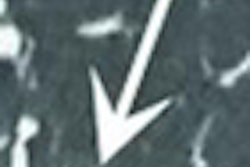Dear CT Insider,
It's not hard to dial down the dose when acquiring coronary artery calcium scans with CT. The problem is the lower the dose, the less accurate the score, according to a new study from the Netherlands presented at RSNA 2012.
Dutch researchers found a solution in the use of iterative reconstruction, which brought the calcium scores acquired with low-dose CT back to the same level as standard-dose scans. The ability to acquire ultralow-dose calcium scoring scans is important because the exam is often used for screening healthy individuals. Find out how they did it in this issue's CT Insider Exclusive.
As CT lung cancer screening makes its way into clinical practice, and researchers continue to find lung nodules in more than half of the individuals they scan, they're increasingly appreciating the high number of repeat scans that some will need in follow-up -- and the need to dial the dose down even further to keep patients safe.
Toward that end, second-generation iterative reconstruction tools really do make a difference in chest CT, according to investigators from Japan who compared the results of images reconstructed with adaptive statistical iterative reconstruction (ASIR) with the newer model-based iterative reconstruction (MBIR). The Tokyo-based researchers compared the two protocols and found roughly equivalent detection sensitivity for lung findings -- but the MBIR scans were acquired at a fraction of the dose. You'll find the details here.
Speaking of lung cancer, one impediment to more widespread screening of high-risk individuals has always been the concern that CT screening leads to overdiagnosis -- that is, finding slow-growing lung cancers that would never have harmed the patient if left alone. But a new study in the Annals of Internal Medicine tamps down those fears. The researchers discovered that most lung cancers -- three-fourths of them -- detected in screening were fast-growing, and definitely needed to be found before they had a chance to grow up. Read the rest of the story by clicking here.
Is it time to say goodbye to the chest x-ray? One research team presenting at RSNA 2012 thought so. Armed with a 320-detector-row scanner and the latest second-generation iterative reconstruction software, the group found that good, readable scans could be acquired for just a little more than the dose of your typical chest x-ray exam. Lab time was about equivalent too. In fact, the only difference was cost. Find out more, and see the impressive low-dose images here. Certainly CT was able to replace chest radiography for one demographic: children with cystic fibrosis.
In other studies from the recent RSNA meeting, CT helped predict an increased risk of osteoporosis in men, and a team from Toronto showed how to check imaging data for signs of elder abuse.
Finally, in an ominous sign for radiology comes evidence that advanced imaging utilization has fallen significantly in recent years, spurred by reimbursement cuts undertaken as part of the Deficit Reduction Act of 2005. Is Congress aiming at the wrong target? Find out more here -- and stay tuned to your CT Digital Community for coverage of radiology's most important imaging modality.
Happy holidays!



















